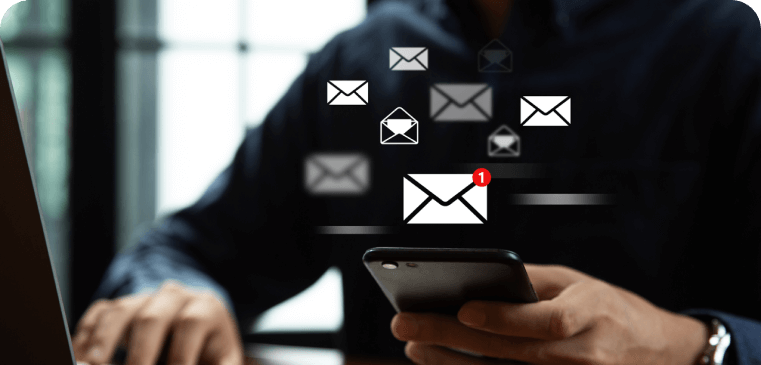- Employee Engagement
The Surprising Science Behind Employee Recognition: How It Transforms Workplace Culture
05 Oct, 2022 |

According to Gallup's research, when on employee recognition, employees are:
- 73% less likely to feel burned out all the time or frequently
- 56% less likely to be looking for or tracking job openings
- 5X more likely to feel culturally linked
- 4X more likely to be involved
- 5X more likely to perceive a growth path in their organization
What Is Employee Recognition?
Recognition is a type of positive feedback and reinforcement that goes beyond telling someone they've completed a performance goal. Employee recognition is a post-facto expression of gratitude, and it might take the form of:
- Peer-to-peer acknowledgment, typically in casual contexts (think handwritten notes and social media shout-outs)
- Rewards in the form of physical goods from upper management, such electronic greeting cards and gift cards
- Awards ceremonies, either formal or informal, that commemorate employees' notable achievements, such as promotions and work anniversaries.
Why Employee Recognition Matters
According to research, positive feedback is critical to our general well-being. An effective reward system for employees also contributes to the growth. We are more inclined to engage with others and our job when we are in a favorable setting that makes us feel comfortable and connected. The kind of praise is also essential - emphasizing on procedures and improvements rather than inherent talents encourages us to keep working.
Consequences of lacking recognition on employees and how to address the issue
The majority of organizations want to keep their excellent reputations, retain and engage their personnel, and recruit new team members. However, this requires practice and effort. One of these initiatives is the introduction and implementation of a reward system for employees.
Employees may feel undervalued or unappreciated if they are not recognised on a regular basis. This has an impact on corporate morale, which is important for productivity. Low morale can lead to increased staff turnover, which incurs additional expenditures.
On the other hand, praising excellent performance increases job satisfaction, which leads to increased earnings. It also motivates employees to keep their standards high – when employees feel appreciated, they are more likely to provide high-quality work.
By implementing a programme that recognizes workers on a regular basis for their contributions, innovation, and cooperation, you may not only cut turnover, but also improve your workplace culture so that people transition from surviving to flourishing.
A healthy company culture benefits everyone involved. You'll motivate people to strive higher and further for themselves, others, and their organizations.
Benefits of Using an Employee Recognition and Communication Platform
According to a SHRM survey, 68% of Human Resources professionals acknowledge that establishing employee recognition programmes has a positive influence on staff retention within an organization. Implementing an efficient employee recognition and communication platform, may provide various benefits to your organization, including:
1. Greater Employee Engagement
Employee engagement may be improved by using an all-in-one employee recognition software, which provides a platform for feedback, communication, and peer-to-peer recognition. This platform or program also leads to Increased job satisfaction, motivation, and productivity.
2. Enhanced Productivity and Performance
Increased productivity and performance are closely related to employee appreciation, communication, and engagement. Companies may increase their bottom line by providing employees with the appropriate tools and resources.
3. Improved Employee Morale
Employees are more likely to be pleased with their job and driven to perform at their best when they feel recognised and acknowledged for their efforts through an effective workplace recognition programme, which boosts employees morale.
4. Increased Retention Rates
Employees are less likely to leave an organization when they feel linked to their colleagues and supported by their bosses. Using effective employee recognition and communication tools can be beneficial in reducing attrition rates of organizations.
5. Improved Communication
According to recent workplace communication data, a sizable majority of employees and executives, around 86%, attribute workplace failures to a lack of effective collaboration and communication.
This emphasizes how vital it is to build good communication channels inside an organization in order to ensure its success. A successful reward system for employees may help individuals and departments communicate and collaborate more effectively, resulting in greater performance and creativity.
6. Higher Accountability
Employee reward and recognition systems and platforms that give frequent feedback and acknowledgment can assist employees in remaining accountable and focused on their goals.
How to involve employee recognition program into modern performance management
Recognition is an important component of modern performance management because it keeps employees linked with their company's strategic aims and acknowledges them while they work to achieve the goals they've set. HR may use these five best practices to increase success when establishing an employee recognition programme.- Clearly defined programmes with outcomes
The most important job in every programme is to have a clear policy. HR should understand their workers' desires and decide how to simplify a new procedure to meet those desires. HR must include employee feedback in this process. - Creating a Reward and Recognition Programme
If at all feasible, employ both monetary and non-monetary forms of acknowledgment. Ensure that non-monetary recognition for peer-to-peer recognition is available to all workers. - Various Reward Options
You should have a variety of award options in your recognition programme. Employees frequently have diverse incentive choices. As a result, numerous reward choices are best suitable that lead to a satisfied employee experience. - Successful Implementation
This is where your leadership team comes in. To ensure efficient team coordination, leaders must have clear communication about the new programme. The policy must be appropriately connected with the implementation, which must be understood by all workers, visible to the entire organization, and properly rolled out. - Monitor and report on changes
After the programme has been implemented, HR should evaluate the results of the reward system for employees and make any required revisions. Adjustments are common throughout the initial stages of adoption. A properly working system requires proper follow-up procedures. Core attributes of an ideal employee recognition, communication, and engagement platform. The most effective reward and recognition system incorporates all of the features required to successfully execute recognition, communication, and engagement initiatives. It comes with an easy-to-use interface, configurable recognition programmes, employee feedback tools, communication and collaboration features, as well as analytics and reporting capabilities. - User-Friendly Interface
Employees and supervisors should find it simple to use and navigate the best recognition software. It should have a user-friendly, visually appealing, and intuitive interface. - Customizable Recognition Programme
The reward and recognition system should enable businesses to tailor their employee recognition programs to their own needs and goals. This entails selecting various types of incentives, establishing criteria for recognition, and developing a feedback system. - Employee Feedback Tool
A successful employee recognition platform should incorporate a feedback mechanism enabling employees to give and receive feedback from both their colleagues and management. This improves communication and performance. - Communication and Collaboration
The platform should have communication and collaboration tools that make it simple for employees to interact and exchange ideas. Instant messaging, group chats, and video conferencing are all examples of this. - Reporting and Analytics
The absence of analytics and reporting options is a prevalent concern with some employee engagement software. Organizations struggle to comprehend the effect of their efforts and make data-driven choices due to a lack of ability to collect and analyze data.
Organizations may fail to spot patterns in employee engagement without powerful analytics and reporting options, limiting their capacity to address concerns and make changes.
In today's fast-paced and competitive workplace, employee recognition software is crucial. It's an effective method for promoting gratitude and thanksgiving in the workplace. By embracing technology to automate and expedite the recognition process, organizations may successfully enhance employee morale, engagement, and productivity.
To ensure that no significant contribution is overlooked, businesses are increasingly turning to employee recognition tools. Moreover, it helps leaders and HR experts to obtain insights from data analytics, directing them in constructing individualized and significant recognition initiatives.
In short, employee recognition software is crucial in fostering a positive and motivated team, which in turn boosts customer retention, productivity, and satisfaction.
Request a Demo Now!
Our Latest Resources
Frequently Asked Questions
Employee appreciation is a critical component in creating a great workplace culture. It promotes a culture of support, cooperation, and mutual respect by reinforcing the organization's ideals of appreciation and gratitude. A healthy workplace culture fosters greater cooperation, employee happiness, and overall employee well-being, resulting in a productive and successful setting.
Yes, employee recognition software is intended to accommodate a wide range of employee preferences. It provides several methods for recognising workers, including public acknowledgement, personalized messages, rewards, and incentives. This adaptability enables HR to customize recognition initiatives to individual preferences, ensuring that each employee feels valued in a way that is meaningful to them.
A successful employee recognition programme is critical to increasing staff engagement. Employees establish a stronger emotional connection with the organization when they feel valued and recognised for their work. This sense of worth and belonging leads to increased work satisfaction and a propensity to go above and beyond in their responsibilities, resulting in improved overall employee engagement.
.png?width=50&height=50&name=Team%20HONO%20logo-01%20(1).png)



